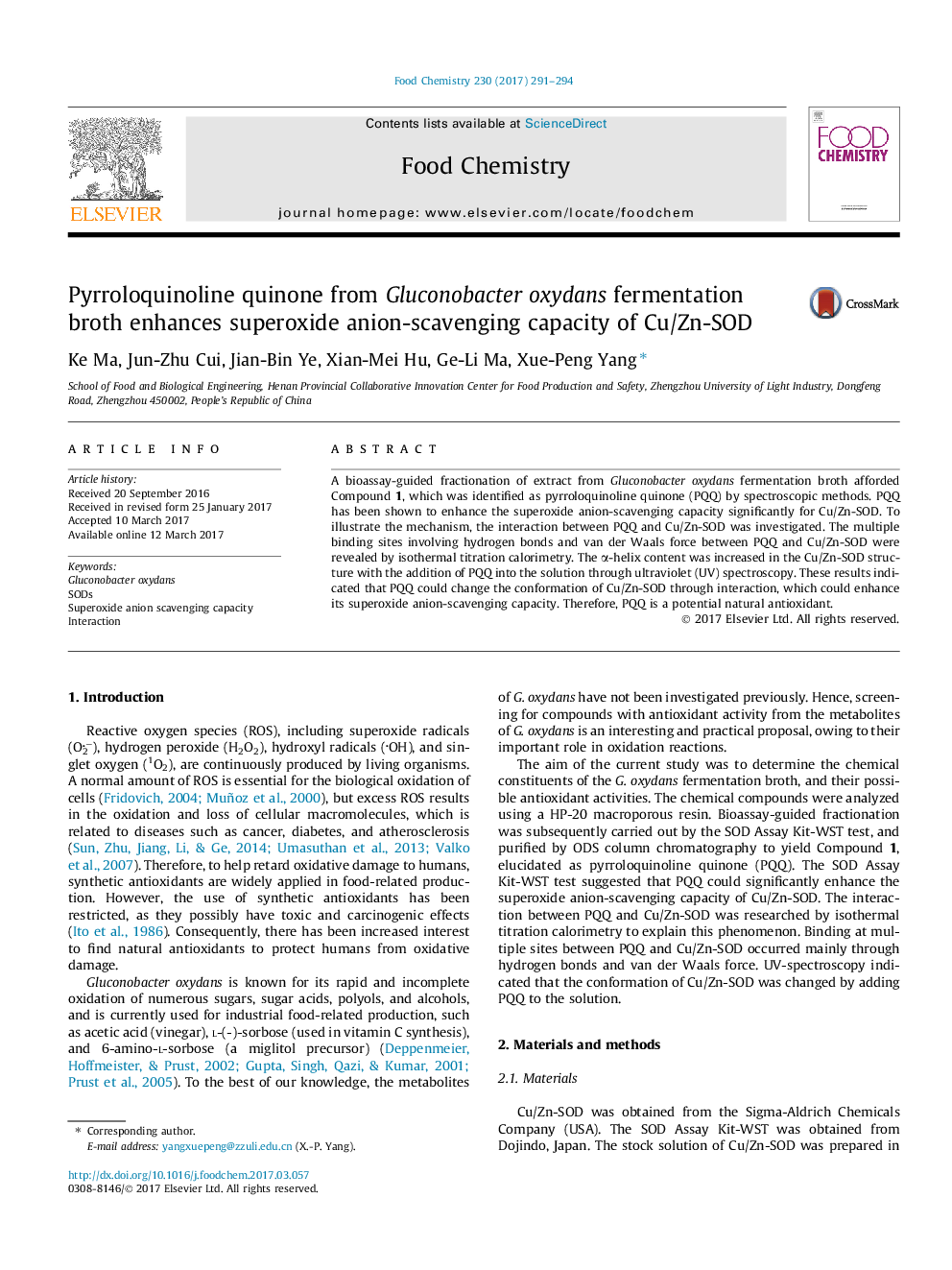| Article ID | Journal | Published Year | Pages | File Type |
|---|---|---|---|---|
| 5133207 | Food Chemistry | 2017 | 4 Pages |
â¢Fractionated Gluconobacter oxydans extract afforded various compounds.â¢PQQ enhanced the superoxide anion scavenging capacity of Cu/Zn-SOD.â¢Isothermal titration calorimetry revealed PQQ and Cu/Zn-SOD interactions.â¢Multiple binding sites involving hydrogen bonds and van der Waals forces were found.
A bioassay-guided fractionation of extract from Gluconobacter oxydans fermentation broth afforded Compound 1, which was identified as pyrroloquinoline quinone (PQQ) by spectroscopic methods. PQQ has been shown to enhance the superoxide anion-scavenging capacity significantly for Cu/Zn-SOD. To illustrate the mechanism, the interaction between PQQ and Cu/Zn-SOD was investigated. The multiple binding sites involving hydrogen bonds and van der Waals force between PQQ and Cu/Zn-SOD were revealed by isothermal titration calorimetry. The α-helix content was increased in the Cu/Zn-SOD structure with the addition of PQQ into the solution through ultraviolet (UV) spectroscopy. These results indicated that PQQ could change the conformation of Cu/Zn-SOD through interaction, which could enhance its superoxide anion-scavenging capacity. Therefore, PQQ is a potential natural antioxidant.
